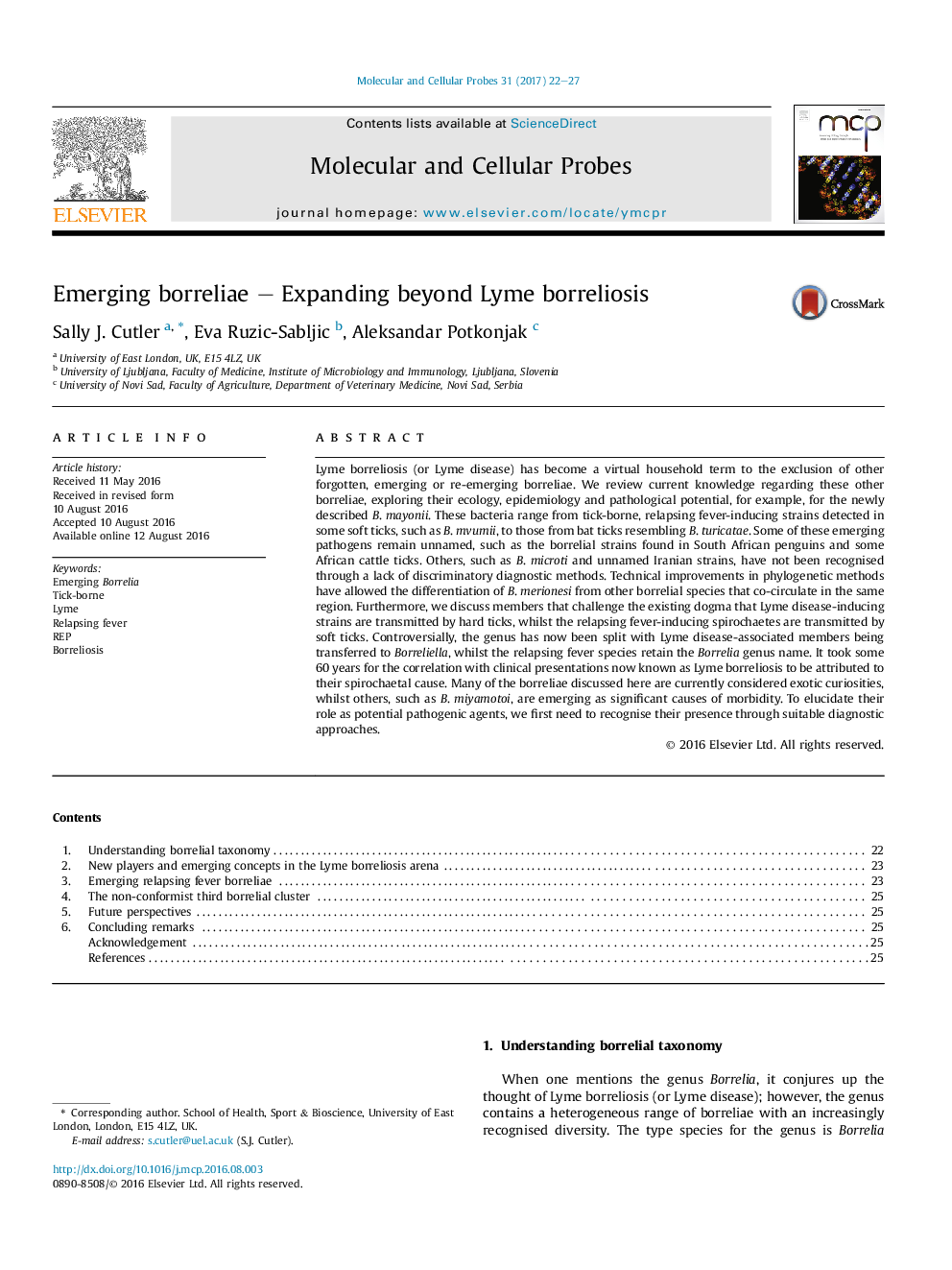| کد مقاله | کد نشریه | سال انتشار | مقاله انگلیسی | نسخه تمام متن |
|---|---|---|---|---|
| 5534544 | 1551172 | 2017 | 6 صفحه PDF | دانلود رایگان |

- Borreliae (Lyme and relapsing fever associated) and recently discovered members are reviewed.
- The genus expands beyond two well separated clades (traditionally divided between soft or hard tick transmitted species).
- We describe “misfit” members within known clades that cannot be defined by conventional criteria.
- Description of “Old World” and “New World” borreliae is best considered obsolete.
Lyme borreliosis (or Lyme disease) has become a virtual household term to the exclusion of other forgotten, emerging or re-emerging borreliae. We review current knowledge regarding these other borreliae, exploring their ecology, epidemiology and pathological potential, for example, for the newly described B. mayonii. These bacteria range from tick-borne, relapsing fever-inducing strains detected in some soft ticks, such as B. mvumii, to those from bat ticks resembling B. turicatae. Some of these emerging pathogens remain unnamed, such as the borrelial strains found in South African penguins and some African cattle ticks. Others, such as B. microti and unnamed Iranian strains, have not been recognised through a lack of discriminatory diagnostic methods. Technical improvements in phylogenetic methods have allowed the differentiation of B. merionesi from other borrelial species that co-circulate in the same region. Furthermore, we discuss members that challenge the existing dogma that Lyme disease-inducing strains are transmitted by hard ticks, whilst the relapsing fever-inducing spirochaetes are transmitted by soft ticks. Controversially, the genus has now been split with Lyme disease-associated members being transferred to Borreliella, whilst the relapsing fever species retain the Borrelia genus name. It took some 60 years for the correlation with clinical presentations now known as Lyme borreliosis to be attributed to their spirochaetal cause. Many of the borreliae discussed here are currently considered exotic curiosities, whilst others, such as B. miyamotoi, are emerging as significant causes of morbidity. To elucidate their role as potential pathogenic agents, we first need to recognise their presence through suitable diagnostic approaches.
Journal: Molecular and Cellular Probes - Volume 31, February 2017, Pages 22-27